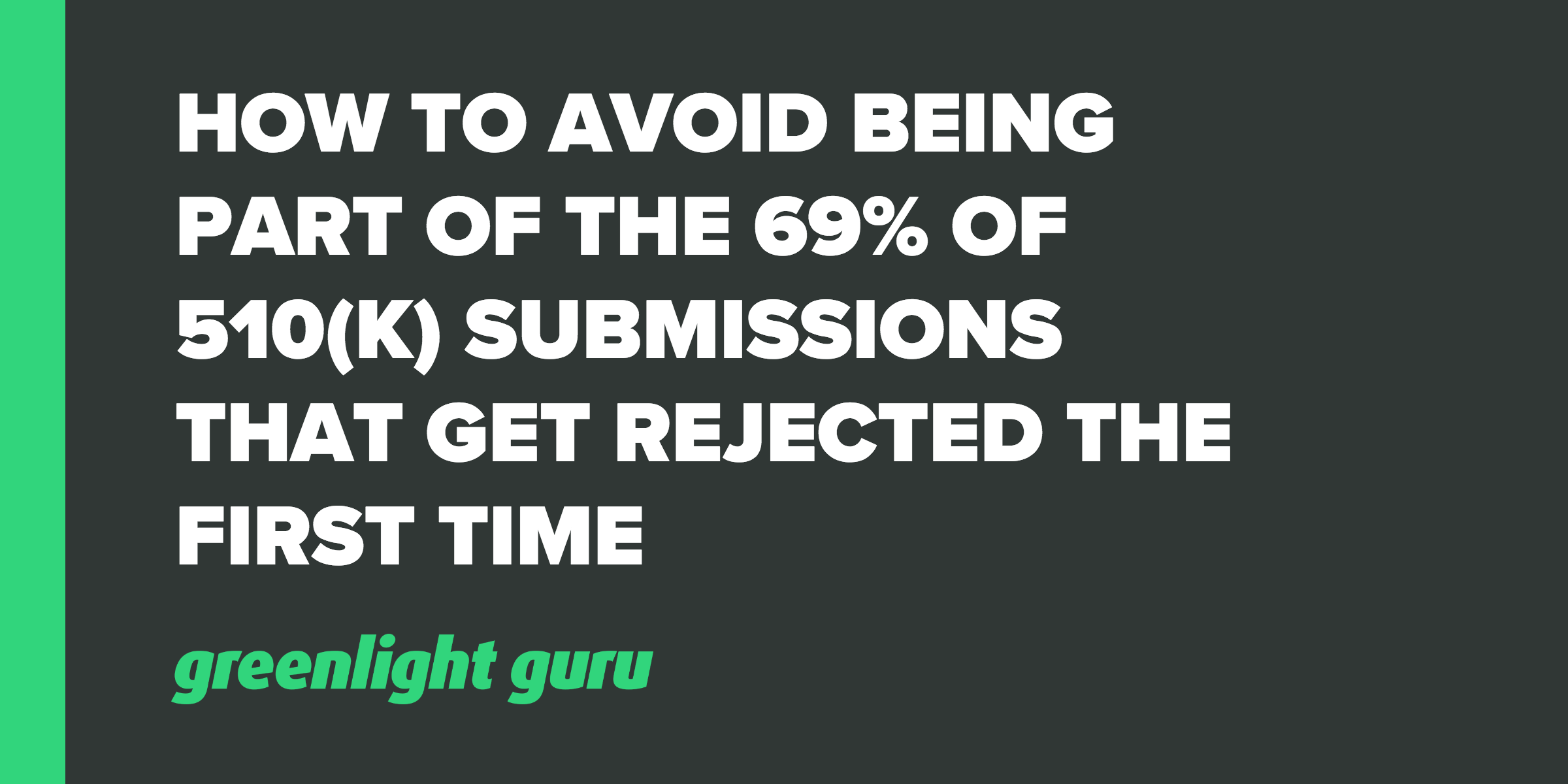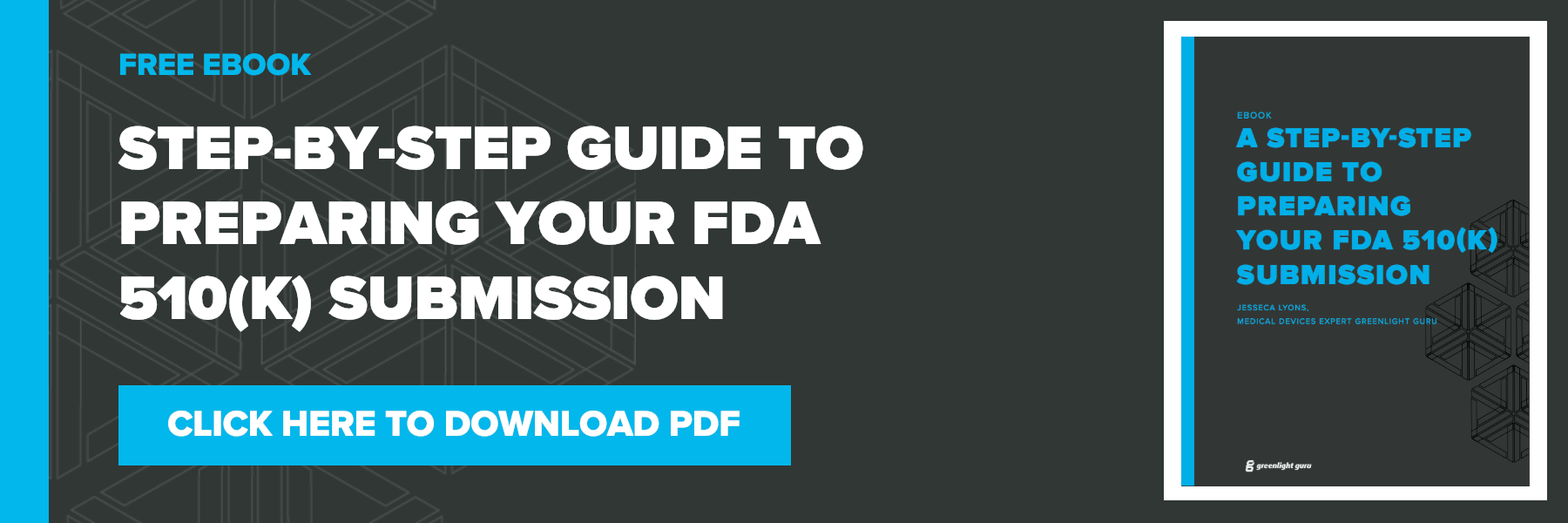How To Avoid Being Part of the 69% of 510(k) Submissions That Get Rejected the First Time

Did you know that 69% of 510(k) submissions were rejected the first time between January and June of 2015?
And up to 75% of first time 510(k) submissions are regularly sent back. I heard this and thought it was a crazy statistic.
Is it really that high?
Then I spoke with a couple of other regulatory experts--one who consults with FDA and another who is a former FDA reviewer--who both confirmed that statistic sounds about right.
Have you had similar experiences? What were the reasons for your initial 510(k) rejection?
Don’t worry if this has happened to you. Sounds like you are not alone in that camp.
Prior to submitting a 510(k), I encourage you to spend some time thinking. Thinking about the role the FDA plays in this process and the pressure a FDA reviewer has and the ramifications if by chance a mistake is made during the 510(k) review process.
It is possible that actual patients could be injured if a mistake is made.
So when your 510(k) gets kicked back to you because something is missing or a document was incorrect, realize why.
Sure, it is very easy to roll your eyes and get frustrated and point the finger at FDA. I’ve been in that seat, wondering why in the world FDA was holding up my submission.
The tips I’m about to share with you are honestly very simple to implement. So much so that you might not even need to read this post any further.
Or maybe your experience will be more like mine when I first learned how to apply these 510(k) tips and pointers (the hard way). That what I’m about to share is so amazing and insightful, that it will have a dramatic and measurable impact on your 510(k) reviews.
Tip #1: Create a Plan
Preparing a 510(k) submission is a project all by itself.
Yes, a good plan helps, especially as you work with others to compile all the documents.
Expect to put in around 100 hours just putting together and writing the submission.
The good news is that the contents are already set and well-defined by the FDA and in the 510(k) checklist.
As part of a good plan, it is a good idea to review the 510(k) requirements with the team to ensure all agree what is and is not applicable to your submission. And do so early--before the 510(k) submission deadline imposed by your management is upon you.
Review the 510(k) requirements while still in development, while documenting your user needs and design inputs.
Tip #2: Get Organized Early
If you know you are going to submit a 510(k) for your device, there is a huge advantage to starting the authoring process in parallel to product development efforts. So much of the content of your design controls feeds into the contents of a 510(k).
One tip I like to do is to create folders according to the particular 510(k) sections and share this with the project team. This is a great way to communicate what is needed for the submission and to help foster collaboration.
As documents and records are drafted pertaining to a particular section, simply place a copy in these folders. Of course, the folders were numbered and named according to the 510(k) checklist.
One drawback is ensuring your submission includes the latest and greatest information. Often times documents and records are fluid and dynamic. Use some project management and document management discipline (and maybe a solid document management system) to assist.
Part of being organized should also include establishing a timeline and schedule. I recommend identifying a target date as to when each item should be completed and drafted. I share the schedule with the team, along with who had responsibility for each item.
Remember, putting together a 510(k) submission is a project.
Tip #3: Review In Pieces
Asking your team to review the entire 510(k) submission all at once is a ludicrous idea.
Instead, have the team review the entire submission one part at a time. As each section is drafted, I send it around to the team for review. This allows the preparation process and review process to happen almost entirely in parallel.
One major advantage of this process is the overall timeline.
Here’s what I mean. I suspect that your 510(k) submission is like most. You have extreme pressure to hit a certain date--a moment in time selected for some very meaningful reason (and sometimes for no apparent reason whatsoever).
Reviewing the 510(k) section by section as each is ready will streamline this process.
Think agile product development methodology applied to 510(k) preparation.
Tip #4: Stay Organized
Yeah, this is tricky – especially as parts and pieces of your submission are in various stages of completion, review, etc.
If you’ve drafted a 510(k), you know that much of the content is repeated throughout. If something changes in one section, there are many other sections that require updates as well.
You have to stay on top of this and stay organized.
While reviewing in pieces is helpful, it is not a complete substitute for a review of the overall 510(k) submission.
Tip #5: Use RTA as a Guide
The first time I had a 510(k) submission go through the FDA’s Refuse to Accept policy, I did not like it at all.
The first time, it took me three attempts to finally get through the RTA step.
The trouble is I did not spend any time really trying to understand the purpose of RTA. I did not spend any time reviewing the FDA’s RTA checklist--which they definitely make known and available free. (And FDA has been clear that the RTA process will be used for 100% of 510(k) submissions.)
Do yourself a favor and embrace RTA. Use the checklist as a guide and one of the final checks before you send your 510(k) to FDA to ensure all that is expected has been provided.
Here is one of the reasons I have grown to embrace refuse to accept. In about 2 weeks after you submit your 510(k), you will get word from FDA whether the 510(k) has been rejected or accepted for additional review.
Prior to RTA, you would submit your 510(k) to FDA and wait--often times months and months--before hearing anything.
Tip #6: Go To a Copy Center To Print the 510(k) for Submission
When it comes times to make final preparations and to ship the 510(k) to FDA, I highly recommend that you go to a copy / document center to assist with this.
Sure, you can definitely try to do all of this with your desktop printer.
But realize the value of a copy center. They are affordable and high value. Assisting with your 510(k) printing, tabulation, pagination, etc. is what they do all day every day.
When you are well organized, you will likely be able to hand off the task of printing the 510(k) with a few minimal instructions. Worth every penny.
Of course when the copy center is done, give the submission one final check before boxing it up and shipping it out.
When you follow those six tips, the chance of having your 510(k) submission rejected will be reduced dramatically.
Jon Speer is a medical device expert with over 20 years of industry experience. Jon knows the best medical device companies in the world use quality as an accelerator. That's why he created Greenlight Guru to help companies move beyond compliance to True Quality.









